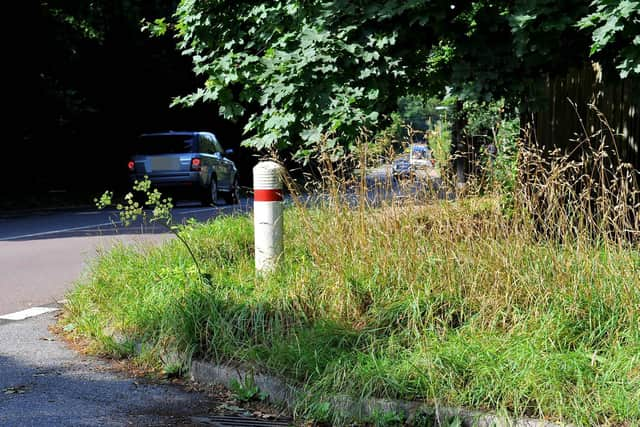Grass cutting on Hemel's roadside verges to start this week
and live on Freeview channel 276
Hertfordshire County Council say that because of the delay to the start of the grass cutting season, the results of the first cut may look messy, with clumps of grass and possible litter being left behind. They request the public's patience on this matter.
It is of course particularly important that this is kept on top of at the moment as people are using grass verges to maintain social distancing while getting their daily exercise.
Advertisement
Hide AdAdvertisement
Hide AdHowever, the council advises that there may be some areas where it is not possible to cut due to the density and proximity of parked cars at the moment – another consequence of the lockdown – but they say they will revisit these places when restrictions are relaxed.


This year, for the first time, the council intends to cut some roadside verges in rural areas in a different way to encourage the growth of wildflowers. These areas will be cut only once a year, between mid-July and mid-August, with the grass cuttings removed. This will allow for the growth, flowering and seeding of wildflowers, as well as preventing the verges from being dominated by more aggressive plant species. This will provide a better habitat for bees and other pollinating insects.
The ‘wildflower’ programme is dependent upon the current social distancing rules being relaxed, so the programme may be pushed-back by one month, and completed in mid-September.
Although this new approach is starting this summer, it will take at least two or three more summers before wildflowers will be visible. As a result, some verges may appear overgrown or unmaintained in this first year, but this a natural part of the new habitat establishing itself.
Advertisement
Hide AdAdvertisement
Hide AdThis new approach will contribute to the Sustainable Hertfordshire strategy - the county council’s ambitious programme to improve sustainability in the county.
Away from these wildflower verges, grass cutting generally takes place throughout the growing season (March to October). Each area of grass will be cut between two and six times a year, depending on how fast it grows, and will be cut to a height of 150mm or 250mm, depending on whether it’s in an urban or rural area.
Phil Bibby, Cabinet Member for Highways and Environment, said: “We need to keep the grass cut fairly short so that road users can see clearly at junctions and bends in the road. However, we know that roadside verges are often home to a wide range of plants and animals, so we don’t want to cut back vegetation too much. We’re determined to protect and improve Hertfordshire’s natural environment, and the changes to how we cut roadside grass that we’re introducing this year will help increase the habitats and food that our pollinating insects rely on.
“I hope that people will bear with us while we catch up on the backlog caused by the coronavirus restrictions.”
Advertisement
Hide AdAdvertisement
Hide AdThe county council undertakes highway grass cutting in Hertsmere, Three Rivers, Dacorum (in part) and surrounding villages in North and East Herts.
Local district or borough councils undertake highways grass cutting in the remaining areas.
Grass cutting is highly weather dependant and plans can change depending on weather and ground conditions, and on the rate of grass growth.